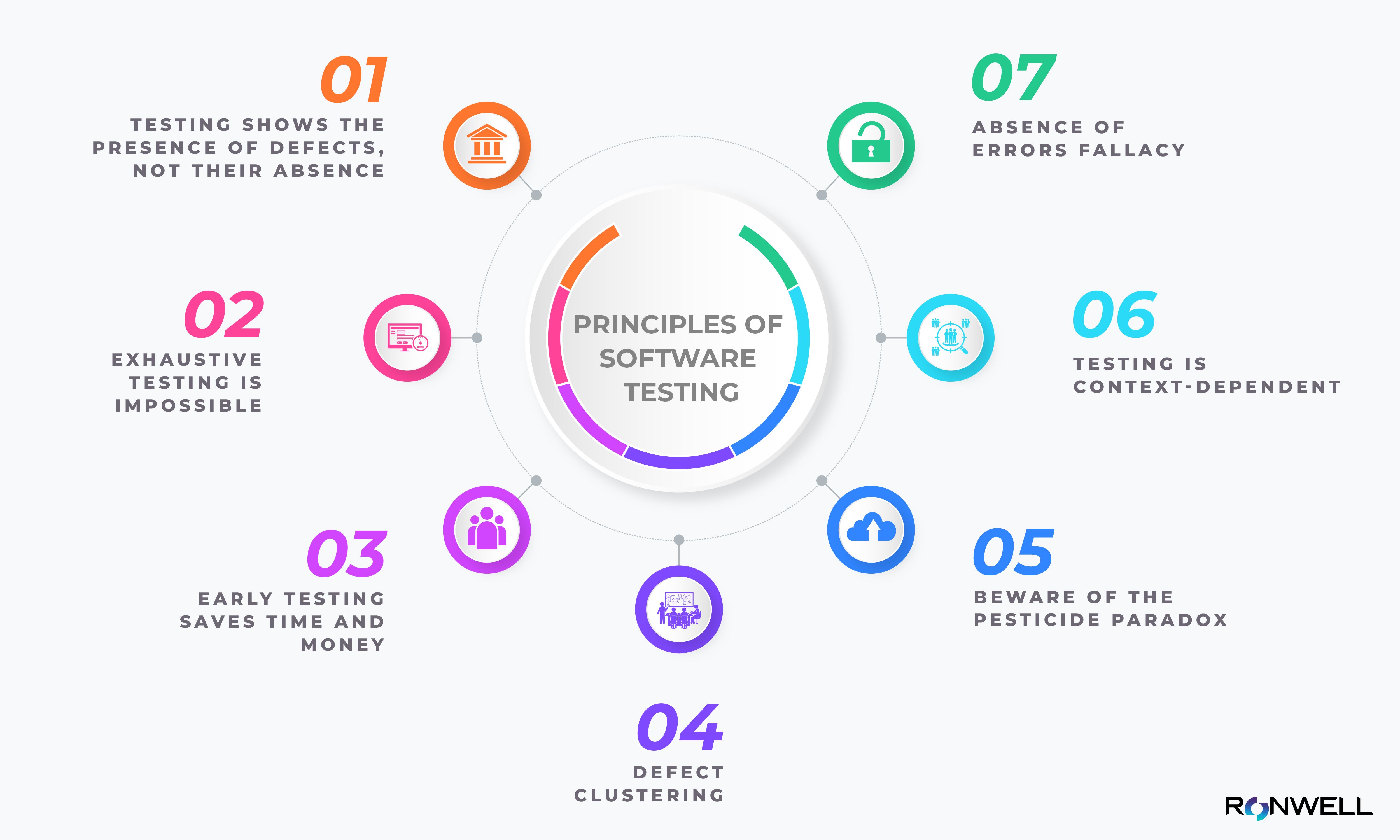

Our Services
Test Automation ServicesAI & Machine LearningBlockchainCRM ConsultingData Science & EngineeringDevOpsDigital MarketingDigital TransformationEmbedded Software DevelopmentERP Consulting ServicesManaged IT ServicesMergers & Acquisitions AdvisoryQA And Testing ServicesRobotic Process Automation SAP Consulting DevelopmentSoftware and Application DevelopmentSQL ConsultingStrategy ConsultingSustainability
- Contact Us
Our Services
- Test Automation Services
- AI & Machine Learning
- Blockchain
- CRM Consulting
- Data Science & Engineering
- DevOps
- Digital Marketing
- Digital Transformation
- Embedded Software Development
- ERP Consulting Services
- Managed IT Services
- Mergers & Acquisitions Advisory
- QA And Testing Services
- Robotic Process Automation
- SAP Consulting Development
- Software and Application Development
- SQL Consulting
- Strategy Consulting
- Sustainability
Insight
Company
Industries
- Contact Us

Master the Art of Quality Assurance with These 7 Powerful Principles of Software Testing
The seven principles of software testing will teach you all you need to know about testing in this blog post.
- insight
- /
- blog
- /
- software-testing-principles
The world of technology today is ruled by machines, and their actions are set by the software that runs them. In order to ensure that machines perform in the manner that we want them to, software testing is essential.
Testing software is time-consuming and demanding of a lot of resources. Obviously, you want to maximize the value you obtain from your testing efforts. Hence, numerous guild lines have been offered and recommended by researchers already active in the topic to facilitate effective and efficient testing. The previous several decades have accumulated many testing concepts thanks to a thorough grasp of testing psychology.
The seven principles of software testing will teach you all you need to know about testing in this blog post. So what are these principles of software testing:
- Testing shows the presence of defects, not their absence
- Exhaustive testing is not possible
- Early testing
- Defect clustering
- Pesticide paradox
- Testing is context-dependent
- Absence of errors fallacy
Let’s get started.

Testing Principle 1: Testing shows the presence of defects, not their absence
The purpose of software testing is to cause the software to fail. Defects in software are reduced by testing. Testing software discusses the existence of flaws but not their absence. Yet, software testing cannot guarantee that the software is error-free.
Before releasing it into production, testing it helps find bugs so they can be fixed. However, this method does not guarantee that the final product is entirely bug-free, and the implication is that bugs exist but was eluded throughout your testing.
You may not have found every problem for a variety of reasons, such as the fact that the test cases did not include every possible scenario.
It would be best if you didn't promise that the program is error-free because of this principle, which aids in setting stakeholder expectations.
Testing Principle 2: Exhaustive testing is impossible
Except for simple cases, it's not possible to test everything, all possible combinations of inputs and preconditions. Instead of testing everything, we base our testing on risks and priorities.
During real-world testing, it's hard to test every feature with all possible input data combinations, both valid and incorrect. So, a few combinations are tested using different methods based on how important they are. To test everything, you would have to try forever, and most of those attempts would be useless. Also, the project schedule wouldn't let us try out so many different options.
For example, a field that only accepts letters, special characters, and numbers from 0 to 1000 would have a lot of possible combinations to test. You can't test every possible combination for each type of input.
See More: 5 Failures in Test Automation: Best Practices for Dealing with Them
Testing Principle 3: Early testing saves time and money
During the requirement analysis phase, testers are brought in early on to find bugs. The cost to fix these bugs is much lower than the cost to fix bugs that are found later in the testing process.
Requirement documents, specifications, and any other kind of document need to be tested so that if the requirements are wrongly written, they can be fixed right away instead of having to be fixed during the development phase.
Read Also: Smoke Testing vs Regression Testing: Key Differences
Testing Principle 4: Defect clustering
Defect clustering is the concept that most bugs are found in a small number of software modules or components. This is similar to the Pareto Principle, which says that about 80% of problems are found in 20% of the components.
This is important to keep in mind during testing, since it increases the likelihood that you will identify further defects in the same module if you find one. If you identify the complicated regions that are undergoing the greatest change or have the most dependencies, you may concentrate your testing efforts on these high-risk areas.
See Also: Unit Testing vs Functional Testing: A Detailed Comparison
Testing Principle 5: Beware of the pesticide paradox
In the long run, the same set of test cases won't be able to detect any new issues if they're run over and over again with no variation. Test cases should be evaluated and updated on a regular basis, and new, unique tests should be developed to exercise new areas of the program or system, increasing the likelihood that additional bugs may be uncovered.
Long-term use of a stable suite of test cases has been shown to reduce the total number of flaws in a system. There comes a point when repeating the same set of test cases no longer reveals the bugs. In order to disclose additional bugs, we may need to replace the current collection of test cases with a new set of test cases based on the next set of risks.
Read Also: Test Plan: The A-to-Z Guide
Testing Principle 6: Testing is context-dependent
There are many different domains on the market, and each one has a number of uses. For each domain, their applications have various needs, functionalities, varied testing purposes, risk, approaches, etc. Testing varies among domains and is therefore, entirely dependent on the nature of the application or domain being tested.
For example, testing an e-commerce or advertising app differs from testing a banking app. Each type of application has a different level of risk. So, you shouldn't test different applications with the same method, technique, and type of testing.
Testing Principle 7: Absence of errors fallacy
Even if your software is 99% free of bugs, if it doesn't meet the needs of your users, it's still not usable. That is why it is so important to conduct tests that are specific to the system's needs. Bug-hunting is just part of software testing, as important is making sure the product satisfies the intended audience.
Although it may be the expectation of some companies, principles 2 and 1 remind us that it is impossible for testers to conduct all available tests and detect all potential problems.
Therefore, it is a mistake to believe that only identifying and addressing several problems would guarantee the system's success. Even if all criteria are met and all bugs are fixed, a system may still be inferior to alternatives or have poor usability, even if it has been subjected to exhaustive testing.
Read Also: 10+ Best Software Testing Books in 2023
Bottom Line
You can improve the quality and efficacy of your testing approach as a whole by using these seven principles.
What's more, when you implement one principle, you may discover that the others naturally fall into place. For example, testing at the requirements level early in the software development lifecycle may help offset the absence-of-errors fallacy by increasing confidence that the project will fulfill the needs of its intended audience.
Principles of Ronwell Digital Software Testing Team
Ronwell Digital has a team of experienced software testers who follow the seven principles of software testing to ensure that the software they test meets the required quality standards.
Our software testers proceed in accordance with the principles and transparently in all testing processes.
All of the customers we have served so far have been satisfied with our testing services. Check out our references!
Also, our Test Manager looks forward to a preliminary interview with you. Contact us today!
References
Abode QA - Principles of Software Testing
Astqb - Seven Testing Principles
Writer:

Halime Yılmaz
Content Marketing Specialist
5 min read
22 March 2023, Wednesday
Related Posts
Related Industries
Related Services










